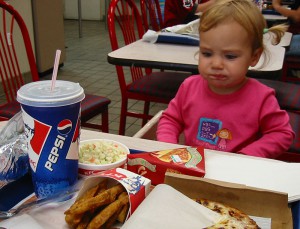“Food” assumes a very broad specter of things that can be consumed. The purest form of food is fruits and grains that were created for human consumption. The original food is beautiful to our eye, as it was made for this purpose, as well as to fill our bodies with all essential elements required for building, supporting and healing our organism. Today we use fruits, grains, vegetables, nuts, meats and synthetic derivatives to widen the definition of “food”. But to make artificial food pleasing a lot of work is required. Huge industry exists to generate desirable taste, color, texture and nutritional value for synthetic foods. When that is done, “Frankenstein” is appreciated and made equal to an original creation. We are getting attached to it, and often choose substitute over the original. Regardless of it, food consumption is not a mere energy fulfillment procedure, but a religion of bodily satisfaction with a three times every day church attendance. And we crave more… No wonder then that we want to worship the subject of our adoration, we need to build temples to it, and we desire to paint and photograph it.
Having previous paragraph as a background, you can understand why I perceive some photographs of the food as icons for veneration (1st picture from npr.org); some as documentation, equal to a Vodou experiences from another topic (9th picture); some as subway’ paparazzi shots of Walker Evans (12th picture); and some as an attempt to recreate actual experience by manipulating a subject, as Capa may have done (“dirty tricks” from pixiq.com). Some photographers treat food as a subject matter; some, just like “f64”, can’t care less that the subject is delicious, all they are looking for is a composition (15th picture from robertmann.com); some display humbleness towards food by alluding to a naturalistic photography of 1880s (22nd picture); and some are playing with their food (24th picture).
Not every picture, where food is present in the shot, can convey emotions. Therefore, I don’t think that food by itself can be an art. What is important is a reproduction of the environment that can communicate feelings. To do so, food may or may not be used (picture 27 vs picture 28); it is just an accessory, which rarely essential. I have made over 20,000 pictures since 2001. Only a handful of them have food in them, and only a few communicate emotions because of food. Out of them all this one is my favorite (Sep. 2002):



